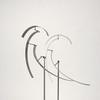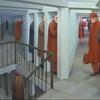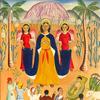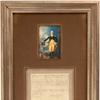Works From Eames to Judy Chicago Join Iconic Fashion Designs in 'Christian Dior' Traveling Blockbuster at Brooklyn Museum
- September 06, 2021 21:11

The New York premiere of the exhibition Christian Dior: Designer of Dreams traces the groundbreaking history and legacy of the House of Dior and features unique pieces drawn primarily from the Dior archives.
Christian Dior: Designer of Dreams explores the more than seventy-year history of the House of Dior with over two hundred haute couture garments as well as photographs, archival videos, sketches, vintage perfume elements, accessories, and works from the Brooklyn Museum’s collection. Presented in the museum’s magnificent 20,000-squarefoot Beaux-Arts Court, designed by McKim, Mead & White in 1893, Christian Dior: Designer of Dreams is based on major exhibitions held at the Musée des Arts Décoratifs, Paris, in 2017, the Victoria and Albert Museum, London, in 2019, and the Long Museum West Bund, Shanghai, in 2020. The exhibition is curated by Dior scholar Florence Müller,
Avenir Foundation Curator of Textile Art and Fashion, Denver Art Museum, in collaboration with Matthew Yokobosky, Senior Curator of Fashion and Material Culture, Brooklyn Museum, and will be on view from September 10, 2021, to February 20, 2022.

New to the Brooklyn Museum presentation are works by leading American photographers such as Lillian Bassman, Cass Bird, Henry Clarke, Louise Dahl-Wolfe, William Helburn, Horst P. Horst, William Klein, David LaChapelle, Annie Leibovitz,
Frances McLaughlin-Gill, Gordon Parks, Irving Penn, Karen Radkai, and Herb Ritts, with a special presentation of Richard Avedon’s iconic Dovima with Elephants, Evening Dress by Dior, Cirque d’Hiver, Paris (August 1955). Additionally, works by Dior and the artistic directors who succeeded him—Yves Saint Laurent, Marc Bohan, Gianfranco Ferré, John Galliano, Raf Simons, and Maria Grazia Chiuri—are juxtaposed with works from the Museum’s collection. In one section, a rare ten-panel ebonized FSW (Folding Screen Wall) (1946–55), by Charles Eames and Ray Eames, is displayed with Dior designs of the era. On view in another section are drawings and studies by Judy Chicago, presented with recent designs by Chiuri. Of special note is Dior’s one-of-akind, 31-inch Fashion Doll 1880 (Afternoon Ensemble), which entered the Brooklyn Museum’s collection in 1949, making it the first U.S. museum collection to acquire a Dior.
With objects drawn primarily from the Dior archives, the exhibition includes a vast array of haute couture garments that exemplify many of the French couturier’s fabled silhouettes, including the “New Look,” which debuted in 1947, just months before Dior would travel to the United States and open the Christian Dior New York branch. With his designs widely photographed and featured in leading publications, Dior became one of the world’s most recognized names in fashion. The exhibition also brings to life Dior's many sources of inspiration—from the splendor of flowers and other natural forms to classical and contemporary art—that would influence the designers at the House of Dior for decades. A toile room, a tribute to the Ateliers, and adjacent galleries of couture garments showcase the excellence of Dior’s petites mains. The central atrium of the Beaux-Arts Court has been redesigned as an enchanted garden, and a concluding gallery showcases many celebrated dresses worn by movie stars from Grace Kelly to Jennifer Lawrence.

The presentation also explores the evolution of the House of Dior through the vision of its subsequent artistic directors, from Yves Saint Laurent, whose key influences included the beatniks and the 1953 film The Wild One, to Marc Bohan and his almost thirty-year reign during the revolutionary 1960s and 1970s, as well as the 1980s, when Bohan drew
inspiration from Jackson Pollock. Other artistic directors’ creations include Gianfranco Ferré’s architectural designs of the 1990s; John Galliano’s reinventions of the Dior silhouettes inspired by works as diverse as Egyptian sculpture and paintings by Giovanni Boldini; Raf Simons’s own minimalist take on Dior’s original designs; and pieces by the current and first female creative director of Dior women’s collections, Maria Grazia Chiuri, who has brought a new vision to the historic fashion house. Notably, in 2016 Chiuri debuted T-shirts emblazoned with Chimamanda Ngozi Adichie!s statement “We Should All Be Feminists” and has committed to having the official images of each new collection photographed by women. As the nation’s only major museum to have galleries and a collection dedicated to feminist art—the Sackler Center—the Brooklyn Museum is uniquely suited to an exploration of Chiuri’s groundbreaking initiatives to champion
women creatives.
Florence Müller, Avenir Foundation Curator of Textile Art and Fashion, Denver Art Museum, says, “As early as 1947, with his celebrated ‘New Look’ collection, Christian Dior transformed his sudden name recognition into the international expansion of his House, becoming a precursor of contemporary globalized fashion. The opening of the first New York branch, in 1948, was a prelude to this worldwide fame. Following on from the presentation of Christian Dior: Designer of Dreams in Paris and London, the new exhibition at the Brooklyn Museum pays tribute to this unique historic fashion adventure initiated between Paris and New York.”
“The Brooklyn Museum has a long record of recognizing important contributions in the history of fashion design, from The Story of Silk (1934) to the groundbreaking Of Men Only (1976) to the recent Pierre Cardin: Future Fashion (2019) and now Christian Dior: Designer of Dreams. Each exemplifies the power of fashion to influence and shift visual culture at large,” says Matthew Yokobosky, Senior Curator of Fashion and Material Culture, Brooklyn Museum. “Today, the work of Maria Grazia Chiuri has reshaped the Dior dream for a new generation, with a worldview that brings with it inclusivity and respect as key philosophical directives. We couldn’t be more excited to present these innovative, beguiling—and technically outstanding—designs to our audiences.”






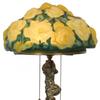
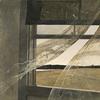




Ser100x100_c.jpg)
